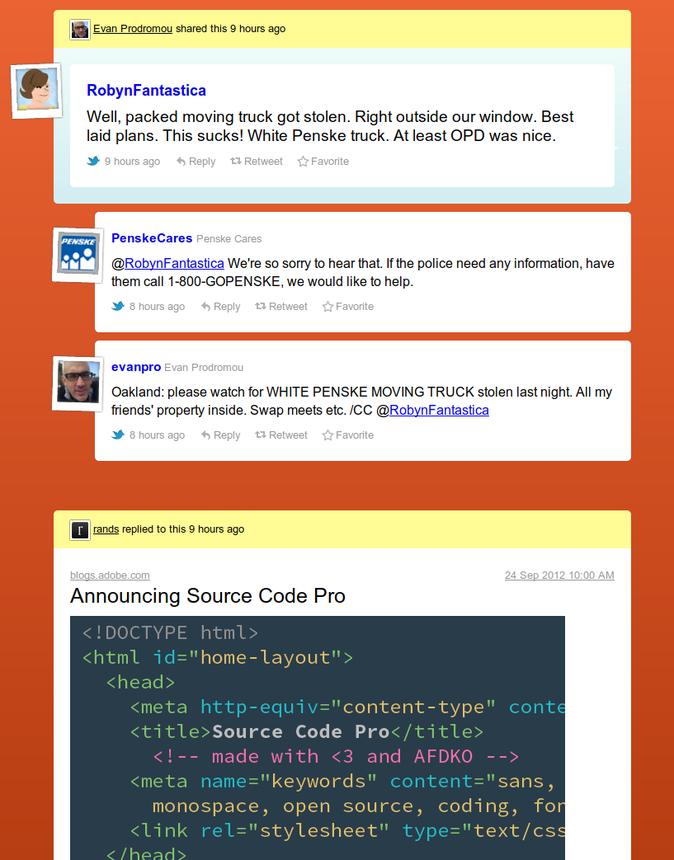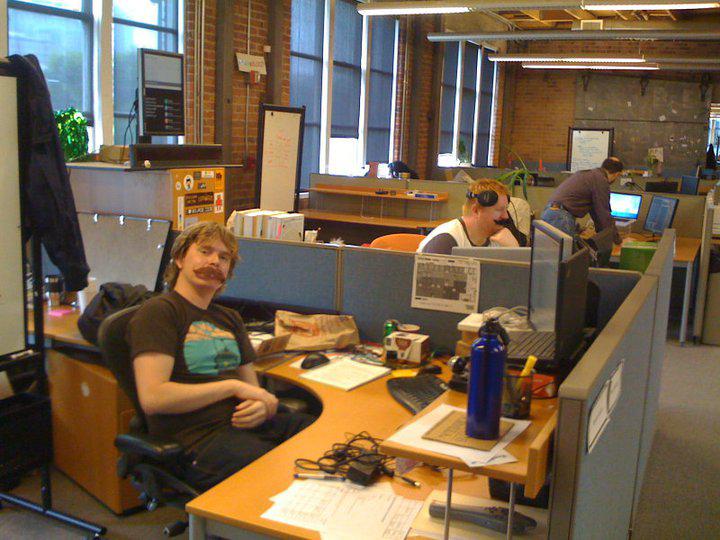
Leapfrog was a content aggregator that I helped Mark Paschal design and build. It tried its best to put full content at front and center, rather than merely linking to it.
Leapfrog was one of a series of experimental projects that Mark and I collaborated on, with various different takes on personal publishing and the decentralized social web. Leapfrog started as a prototype of a new content aggregator for an ill-fated TypePad redesign, but later grew into a more general content aggregator supporting Twitter, TypePad, Flickr, Vimeo, Facebook, Tumblr and Mlkshk.
Leapfrog had a few features that set it apart from the best-of-breed content aggregators at the time it was concieved. The first and most important is that it showed full content wherever possible, more resembling the "Friends Page" from LiveJournal or the "Neighborhood" view from Vox than the terse and regular "activity stream" UIs we've become accustomed to on the modern social web. To achieve this it tried steadily more drastic measures, including standards like OEmbed and RSS and falling back on some more heuristic techniques where this fails.
Leapfrog was also an attempt to provide a more useful UI for reading Twitter, incorporating features that have since become standard features of the Twitter experience, such as conversations and the ability to see the content from a link before clicking on that link.
Although the larger decentralized social web project that we were heading towards was never completed, Leapfrog was useful in its own right and retained a small set of users.
Leapfrog is open source but successive changes to Twitter's API Terms of Use rendered it far less useful over time and eventually it was shut down. See Mark's portfolio for more pictures.

Photo by Josh Enders
